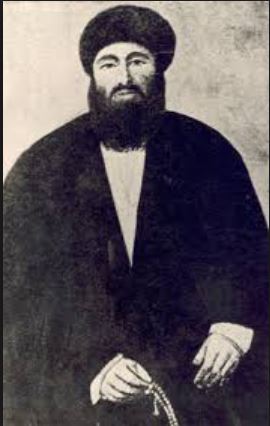
Sayyid Kāẓim ibn Sayyid Qāsim al-Ḥusaynī al-Rashtī
(c. 1213/1798 or 1799 - d.1259/1843)
Sayyid Kāzim al-Husayni al-Rashtī : Some introductory Bio-Bibliographical Notes and Sources.
Stephen Lambden
In Progress, last updated, 21-12-2017.
IN PROGRESS
Sayyid Kāẓim al-Rashtī the son of Sayyid Qāsim al-Ḥusaynī was born in Qajar Persia (now Iran) around the mid 1780s (c. 1199/1784 or 5) or some time in the early 1200s AH., corresponding to the 1790s CE. As a youth and teenager he was recognized as a deeply spiritual and visionary, insightful thinker. Aged about twenty he composed a lengthy, 7000 or so verse commentary upon the Qur'anic Surah Tafsīr āyat al-kursī (`Commentary upon the verse of the Throne', Qur'an 2:255). A taste of the depth of this complex and little studied Arabic work is evidenced in its opening lines which read as follows :
"Praised be unto God Who shed the splendor of His radiance upon the inmost hearts of the mystic knowers so as to actualize the disclosure of the orient lights of His theophany. He set ablaze the hearts of the mystic wayfarers through the orient splendors of His Light and explicated the inner retreats of all the worlds for the purpose of dazzlingly illuminating the radiances of His cyclic schemata. And blessings be upon our Master [the Prophet] Muhammad through whom He settled down upon His Throne (`arsh) and His Seat (kursi) for he is the Name through the shadow of which eyes were solaced. Wherefore there did not emerge from before me aught save what is of Him for he [Muhammad] is the Hidden, Mightiest Name (al-ism al-a`zam) and the Light of Lights treasured up, the very one through whom the Lights found illumination. Through him were mysteries disclosed and Light irradiated from the Dawn of Eternity (subḥ al-azal). And through him did all existence find realization" (Trans. Stephen Lambden)
Another lengthy, around 24,700 verse work recently printed in XX volumes spanning XXXX pages, and again dazzinbgly complex but incomplete work is Rashti's Kitāb sharḥ khuṭba ṭutunjiyya ("The Book of the Commentary upon the Sermon of the Gulf"). It was first available in a lithograph edition in Tabriz (NW Iran) in 1270 /1853-4.
This 24,700 verse work (so Kirmānī, Fihrist No. 143 p.292 ) is a partial commentary upon about half of the khuṭba al-ṭutunjiyya (loosely) "Sermon of the Gulf" ascribed to Imam `Alī (c. 40/661) which can be found, for example, in the Mashāriq anwār al-yaqīn.. (Dawning-Place of the Lights of Certitude..) of Rajab al-Bursī (d. c. 814/1411) a collection of often esoteric or gnostic documents expressing a high imamology from the first Imam which some Shī`ī authorities have considered ghuluww ("doctrinally extremist"). This oration of the first Shī`ī Imam was allegedly delivered between Kufa and Medina and extends to about four pages of Arabic text. Ibrahimi [Kirmānī] reports that the original ms. is lost but refers to the now very rare old lithograph edition.
Today biographical, intelectual and spiritual genius of Sayyid Kāzim remains little known and appreciated.
Completed near Kufa in Ottoman Iraq towards the end opf his life, his Dalīl al-mutaḥayyirīn ("The Proof regarding Matters Perplexing") is a substantial exposition and defence of the Twelver Shi`i perspectives championed by his master, Shaykh Ahmad al-Ahsa'i who founded the still significant (in various forms), in the middle east. al-Shalhiyya (Shayklhism. after Shaykh Ahmad).
The Arabic Dalīl al-mutaḥayyirīn (Evidence for the Perplexed), written 1258/1842.
Sayyid Kāẓim ibn Sayyid Qāsim al-Ḥusaynī al-Rashtī
(b. Rasht c. 1213/1798 or 1799 - d. Karbala, 1259/1843),
Some introductory Bio-Bibliographical Notes.
Stephen Lambden, UC Merced, January 2018.
In progress and under revision 2018. ,
Sayyid Kazim Rashti, the son of the silk-merchant and scholar Sayyid Qasim al-Husayni, was born in Rasht, northern Persia (now Iran), towards the beginning of the Persian Qajar era, around the mid. 1780s (c. 1199/1784 or 5) or perhaps in the early 1200s AH., corresponding to the 1790s CE. He is best known today as the devout, prolific and learned lifetime disciple and first successor (from 1826 CE), to the Arab-born Shaykh Ahmad ibn Zayn al-Din al-Ahsa’I (d. 1241/1826). This latter figure came to be viewed in parts of the Middle-East, India and elsewhere as the innovative, primary generator of the deeply mystical, sometimes heterodox, branch of Imamocentric Shi`i Islam which came to be known (after this Shaykh) as al-Shaykhiyya (loosely, Shaykhism) and al-Kashfiyya (`Exponents of Spiritual Disclosure’).
In a vision of Fatima, daughter of the Prophet Muhammad (d. 632 CE), or as a youth living in Ardabil via a vision of a long-deceased Safavid progenitor, Sayyid Kazim is said to have been instructed to visit Shaykh Ahmad in Yazd (Persia, 270 km southeast of Isfahan). This he did and from there he is said to have drunk deep of mystical gnosis. The life of Sayyid Kazim was devoted to the defence and propagation of the emergent Shaykhi movement or school. Among the last of his major Arabic writings was the 1258/1842 Dalil al-mutahayyirin (`Evidence for the Perplexed’). Within it Shaykh Ahmad is pictured as a mystical and polymathic genius capable of inspired communications from the occulted, heavenly Imams, the alleged successors of the Prophet Muhammad up till the 9th cent. CE. This in numerous, often esoteric, areas of Islamic knowledge; including metrics, music, grammar, hermeneutics, theology and religious jurisprudence, the history of Shi`i savants and worthies, geometry, astronomy, mathematics, philosophy, alchemy, medicine, divination, numerological prognosis, and the sciences of magic squares. Such numerous areas of expertise were, to some degree, communicated over several decades to Sayyid Kazim. They also included the mastery of religious commentary and exposition, encompassing Tafsir (Qur’an commentary) and the explication of hadith / akhbar (religious traditions); these subjects permeate the writings of Shayklh Ahmad and Sayyid Kazim, both of whom were extremely prolific. The Sayyid of Rasht is reckoned to have composed in excess of 172 books and treatises in both Arabic and Persian. Mostly remaining in manuscript, only a small proportion of these writings have been adequately edited, studied, and printed.
As a youth and teenager, Sayyid Kazim was recognized as a deeply spiritual and insightful thinker within the twelver Shi`i-Shaykhi Islamic community of his day. When aged about twenty he composed a lengthy, 7000 or so verse commentary upon the centrally important Qur'anic `Throne Verse’ (Qur’an 2:255), his Tafsir ayat al-kursi (`Commentary upon the verse of the Throne'). A taste of the depth of this complex and little studied Arabic work, is evidenced in its opening lines where we read:
Praised be unto God Who shed the splendor of His radiance upon the inmost hearts of the mystic knowers so as to actualize the disclosure of the orient-lights of His theophany. He set ablaze the hearts of the mystic wayfarers through the radiant splendors of His Light and explicated the inner retreats of all the worlds for the purpose of dazzlingly illuminating the radiances of His cyclic schemata. And blessings be upon our Master [the Prophet] Muhammad through whom He [God] settled down upon His Throne (`arsh) and His Seat (kursi) for he is the Name through the shadow of which eyes were solaced. Wherefore, there did not emerge from before me, aught save what is of Him for he [Muhammad] is the Hidden, Mightiest Name (al-ism al-a`zam) and the Light of Lights treasured up, the very one through whom the Lights found illumination. Through him were mysteries disclosed and Light irradiated from the Dawn of Eternity. And through him did all existence find realization" (trans. Lambden).
Other similarly complex and lengthy works of Sayyid Kazim include his incomplete though 24,700 verse Arabic commentary on the abstruse `Sermon of the Gulf’ (Khutba al-Tutunjiyya) ascribed to Imam Ali (d. 40/661), the first successor to the Arabian Prophet Muhammad (d. 632 CE). A Tabriz (NW Iran) lithograph printing of this work first appeared in 1270/1853-4, a decade or so after his death. Its deep meanings also with those of his similarly weighty and lithographed around the same time, `Commentary on the Ode Rhyming in the Letter “L” (Sharh al-Qasida al-Lamiyya), remain to be adequately summed up and translated into European languages.
Sayyid Kazim sometimes lived close to his master in Iran (e.g. Yazd, Kermanshah, Mashhad, Isfahan, Qazvin, etc) and Iraq (e.g. Najaf and Karbala) where he imbibed Islamic learning in general and esoterica and Shi`i gnosis in particular. He made a pilgrimage to Mecca and often travelled to the great Shi`i centers, the “thresholds” in Ottoman Iraq,
Today the intellectual and spiritual genius of Sayyid Kazim remains little known and greatly under-appreciated. Aside from the many thousands of contemporary Shaykhis who have, in recent decades, begun (re-) publishing a few of his key writings, members of the approximately 5-6 million Baha’i International community greatly revere Sayyid Kazim Rashti along with his master al-Ahsa’i. In an early work of the Bab (executed Tabriz 1850), Rashti was referred to as “my instructor” (mu`allimi) and Baha’ullah (d. Acre, 1892) in his Persian Kitab-i iqan (Book of Certitude, c. 1862), referred to al-Ahsa’i and Rashti as "twin shining lights". They who seen therein as saintly harbingers of the Babi and Baha'i religions. Indeed, in one of his scriptural Tablets, the founder of the Baha’I religion stated that he “took refuge” in al-Ahsa’i and al-Rashti and “heard from these two what hath not been realized by any except God, the Knowing, the Discerning” (Tablet to a certain Ahmad cited Ishraq Khavari ed. Ma'ida IV:134-5).
✦
SELECT BIBLIOGRAPHY
Sayyid Kāẓim al-Rashtī.
The works of Sayyid Kazim listed below contain some important biographical data. First we may note the followubf extract from the Ibrahimi Fihrist summarizing some lost biographies of Sayyid Kazim Rashti
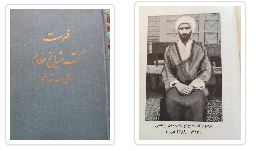
- PDf. Fihrist :115ff. Skr-fihrist.pdf
دليل المتحيرين
Dalīl al-mutaḥayyirīn ("The Proof regarding Matters Perplexing").
A work of Sayyid Kāẓim in response issues surrounding the differences between the person and doctrinal positions of Shaykh Aḥmad al-Ahsā'ī and other Shī`ī Muslims. Completed near Kufa (Iraq) 11th Rabī al-Thānī [II] 1258/ May 22nd 1842.
دليل المتحيرين
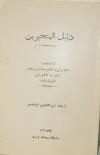
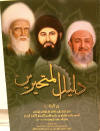
Dalīl al-mutaḥayyirīn two modern editions.
Dalīl al-mutaḥayyirīn (Evidence for the Perplexed), written 1258/1842.
- 1st Arabic edition....
- Copy of 148 pp. ms. in Harvard University Library (USA) deriving from the Bodleian Library (Oxford Univ. UK) : "Naskhī script. Microfilm reproduction of original ms. Arab E.216 in the Bodleian Library". So noted in W-Cat.
- Dalīl al-mutaḥayyirīn, Tabriz [?] Lithograph ed. 1276/1859-60.
- Dalīl al-mutaḥayyirīn. 1st ed. [Tabriz?], 1276/1859-60.
- Dalīl al-mutaḥayyirīn. 2nd (Arabic) ed. Maṭba`at al-Sa`adat, Kirmān, n. d. [197?] 178pp.
- Dalīl al-mutaḥayyirīn. Rep. of Arabic text. Kirman : Chapkhana Sa`adat. n.d. 178pp.
PDf. دليل المتحيرين Ar. Dalil al-mutaḥayyirīn.pdf
The most recent Arabic 2nd ed. 3rd printing of 1423/2002 (see above) is the very beautifully printed edition with pictures of Shaykh Ahmad, Sayyid Kāẓim and the Kuwaiti born al-Ḥajjī Mīrzā`Abd al-Rasūl al-Ḥā'iri al-Iḥqāqī [Born 22nd Mehr 1307 Sh. /XXXX] on the front cover (as well as on many inside pages). .185 [176] pp. + Index (pp.186-7).
PDf. دليل المتحيرين or Dalill.c.pdf or download +index here : http://alfeker.net/library.php?id=1269
Persian Translations of the Arabic Dalīl al-mutaḥayyirīn
- Dalīl al-mutaḥayyirīn. Translated into Persian by his disciple Muhammad Raḍī ibn Muhammad Riḍā', 1st ed. Jumadī al-Awwal 1261/ May 1845 (Dhari`a 8:360).
- Kitāb Dalīl al-mutaḥayyirīn [Tabriz?] : [publisher not identified], 1276/ 1859-60. [Microfilm] Copy in Princeton University Arabic collection, cn. 9302367.01.; Princeton University Arabic collection., Phase II. This is the Persian translation from the Arabic by Muḥammad Raḍī ibn Muḥammad Riḍā.
There is also (see above) a Persian trans. by the Kirmani Shaykjhi leader, Zayn al-Ābidīn Ibrāhīmi
- Dalīl al-mutaḥayyirīn. Trans. Zayn al-`Abidin Ibrahimi. 2nd. ed. Kirman : Chapkhana Sa`adat. n.d. 181pp.
PDf. Per. Dalil al-mutahayyirin-Per.pdf
- Dalīl al-mutaḥayyirīn az taṣnīfāt-i Kāẓim Rashtī ; tarjumah-i Zayn al-ʻĀbidīn Ibrāhīmī. 2nd printing Kirmān: Chāp-Khānih Sa`adat. pp. 4 (Index)+ 181pp.
PDf. Dalil al-mutahayyirin-Per.pdf
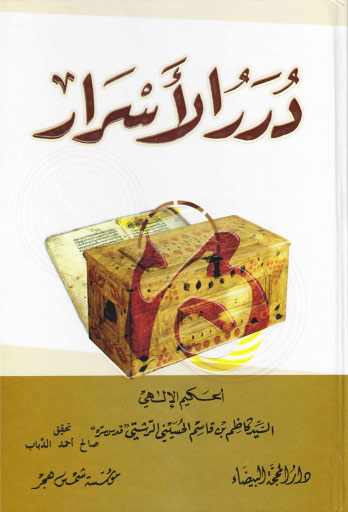
Dalīl al-mutaḥayyirīn
Dalīl al-mutaḥayyirīn (Evidence for the Perplexed), written 1258/1842.
- 1st Arabic edition....
- Copy of 148 pp. ms. in Harvard University Library (USA) deriving from the Bodleian Library (Oxford Univ. UK) : "Naskhī script. Microfilm reproduction of original ms. Arab E.216 in the Bodleian Library". So noted in W-Cat.
- Dalīl al-mutaḥayyirīn, Tabriz [?] Lithograph ed. 1276/1859-60.
- Dalīl al-mutaḥayyirīn. 1st ed. [Tabriz?], 1276/1859-60.
- Dalīl al-mutaḥayyirīn. 2nd (Arabic) ed. Maṭba`at al-Sa`adat, Kirmān, n. d. [197?] 178pp.
- Dalīl al-mutaḥayyirīn. Rep. of Arabic text. Kirman : Chapkhana Sa`adat. n.d. 178pp.
- PDf. Ar. Dalil al-mutaḥayyirīn.pdf
Secondary sources.
Little biographical material has been written about Sayyid Kāẓim al-Rashtī.
Algar Hamid
Corbin, Henry
- En Islam Iranienne
Eschraqhi, Armin
- "Die frühen Schriften des Sayyid ´Alí-Muhammad Shírází „Báb“ (1819-1850) vor dem Hintergrund der Shaikhiyya im schi´itischen Islam. Das Beispiel der Risála fí Ithbát an-Nubuwwa al-Khássa. Einleitung, Edition und Erläuterungen“ Die Dissertation wird Ende 2004 bei Brill (Leiden) veröffentlicht.
- `KĀẒEM RAŠTI' in EIr. : http://www.iranicaonline.org/articles/kazem-rasti-sayyed
MacEoin, Denis
- Phd Thesis (1979) Chapter Three `Sayyid Kazim Rashti' which is slightly revised in The Messiah of Shiraz, Studies in Early and Middle Babism (pp.107-137). This is the most erudite and comprehensive western historical study of Sayyid Kazim Rashti.
- 'Rashtī, Sayyid Kāẓim ' EI2 vol. VIII (Leiden: Brill, 1995) pp. 450-451.
Momen, Moojan.



